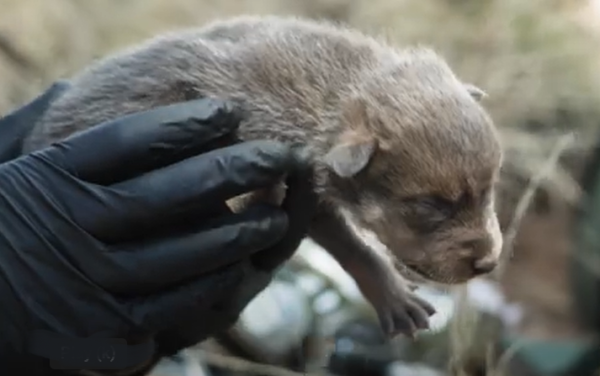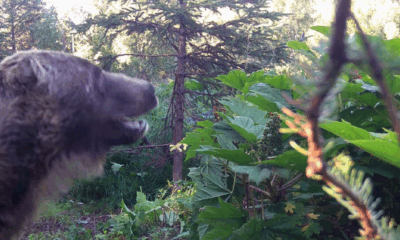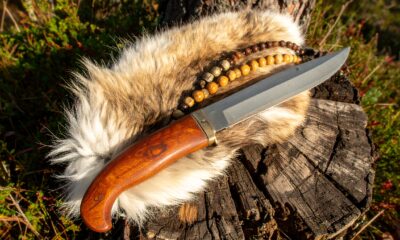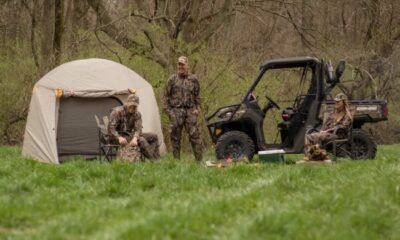Adventure
Howling in Cuckoo: How Mexican Wolves are Fostered

Whoosagudboi?
Did you know that the U.S. Fish & Wildlife Service is “fostering” captive-born wolf pups? I didn’t … and now I just want to know what I need to do to be the guy who walks around sneaking wolf pups into dens.
Yup: Fostering is a coordinated effort of the U.S. Fish and Wildlife Service, Arizona Game and Fish Department, New Mexico Department of Game and Fish, Bureau of Land Management, U.S. Forest Service, and the Saving Animals From Extinction program. This year, 17 wolf pups were placed into wild dens. In total, six were fostered into a single den in Arizona and 11 into three different dens in New Mexico.
Fostering Mexican wolf pups from captivity into the wild is a proven approach to managing the genetic diversity of the wild population. Used since 2016, a total of 146 fostered pups have been introduced into wild dens in Arizona and New Mexico. You see, there’s a “genetic bottleneck” happening similar to what has happened to the African wild cheetah, making all wild wolves more than a little inbred. That’s because all Mexican wolves in the wild originated from seven founders.
The goal for 2025 was to place a larger number of pups into dens in Arizona, which was relatively successful with twice as many pups going to Arizona compared to last year. Placement of pups requires that birth timing is similar between the captive and wild dens, and as is the case in recent years, wolves in Arizona whelped (were born) earlier than those in captivity, making it unfeasible to foster into more dens in Arizona.
The fostering process works as follows. Within 14 days of whelping, pups from Saving Animals From Extinction (SAFE) facilities are transported and mixed with similarly aged wild pups in the dens of wild Mexican wolf packs. Once all the pups are placed back into the wild den, the breeding female will spend the next several weeks caring for both the wild and SAFE-born pups. With the help of her pack mates, the pups will be raised with the skills and knowledge needed for a life in the wild.
The SAFE program is instrumental in the recovery program, as the participating organizations plan for and produce the pups to be placed in the wild dens. Without the immense conservation efforts of the SAFE program and, in particular, the facilities that provided pups for the 2025 effort, recovery would be much more difficult to achieve. Those facilities this year were:
- US Fish and Wildlife Service, Sevilleta Wolf Management Facility – 9 pups
- Endangered Wolf Center – 6 pups
- New York Wolf Conservation Center – 2 pups
“Meeting the genetic recovery goals as outlined in the 2022 Mexican Wolf Recovery Plan is essential,” said Clay Crowder, assistant director, Arizona Game and FIsh Department. “The fostering program is achieving these goals faster than was predicted, with 21 of the 22 required fosters having reached breeding age. Also of note from the foster program is that we now have at least 13 fosters having produced 31 litters, all of which are important to contributing to the genetic health of the wild population. With these successes, we are approaching the criteria to begin evaluating potential downlisting of Mexican wolves.”
The foster program allows for the ability to spread the genetic contribution of the fosters into a wider geographic area, amplifying the benefit of the program. In addition, these pups will learn how to live successfully in the wild from an experienced pack, a further advantage of fostering over releasing adult wolves that have been maintained in captivity.
-

 Hiking & Climbing2 months ago
Hiking & Climbing2 months agoWhen Bears Bring the Drama: A Tail—or Should I Say “Tale”?
-

 Camping & Survival2 months ago
Camping & Survival2 months agoField Dressing 101: Knowing When It’s Their Turn
-

 Adventure1 month ago
Adventure1 month agoElk Calling Tips: Essential Guide for First-Time Hunters
-

 Accessories4 weeks ago
Accessories4 weeks agoBackcountry Trails 2025: Top 10 Hacks & Gear
-

 Adventure3 weeks ago
Adventure3 weeks agoE-Bike Trails During Fall 2025 in the US | Autumn Routes 🚲🍁
-

 Accessories2 weeks ago
Accessories2 weeks agoKilian Jornet States of Elevation Midway Update


